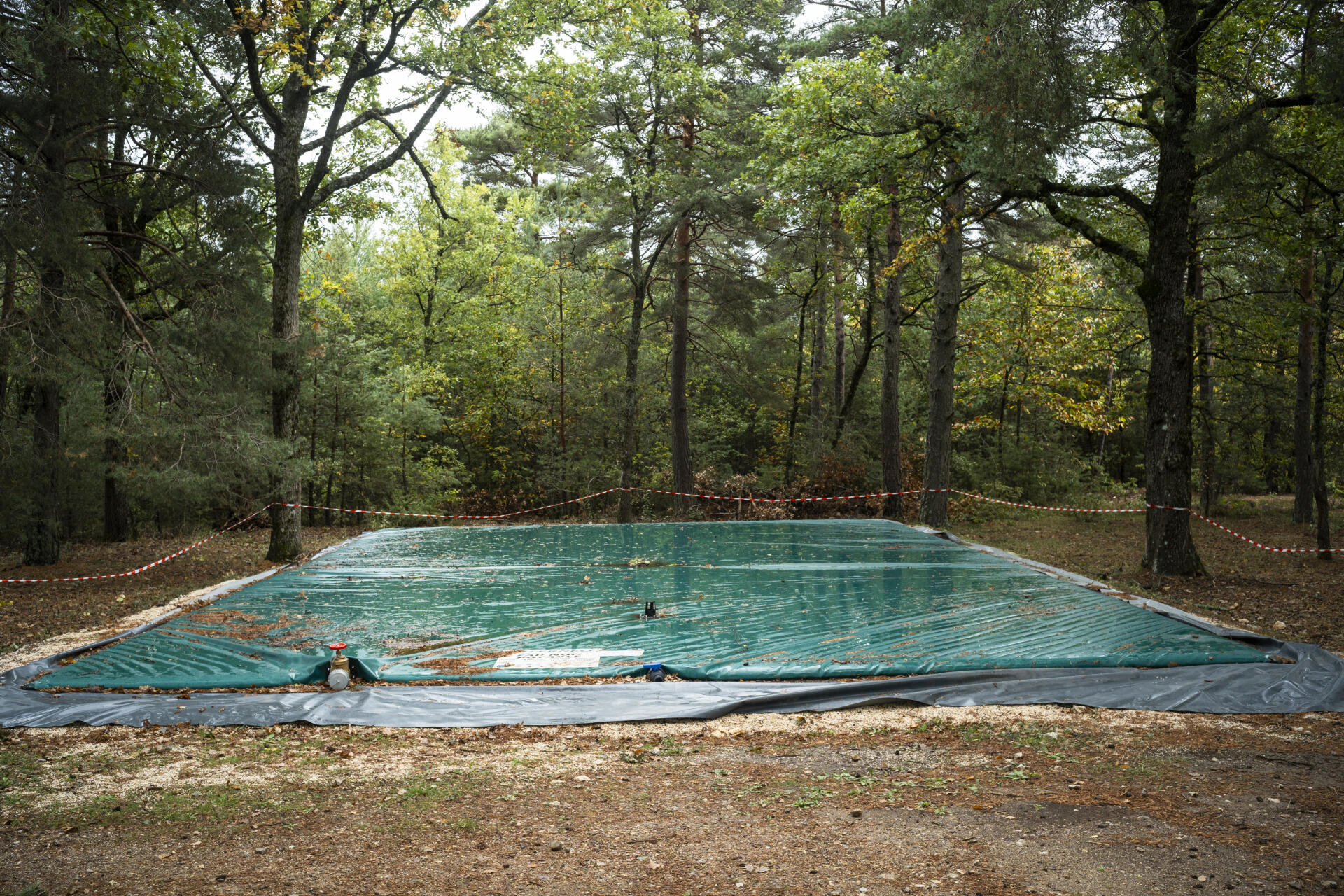“In the summer of 2022, when we told the horse racing society that it was not necessary to water the track, it created a scandal, it went up to the prefect”, explains Laurent Leroy, technical manager of the Intercommunal Water Union, to the small troop who have been wandering the streets of Sault (Vaucluse) for almost an hour on Wednesday June 14.
Place des Aires, where a 19th century cisterne century stores winter rains, Magali Labruyère, from the departmental territorial management, was surprised that a single annual race empties half of this unexpected reservoir, rediscovered thanks to work.
Perched 800 meters above the lavender fields, at the foot of Mont Ventoux, this Upper Provençal village of 1,300 inhabitants is at the forefront of the water crisis. In July 2022, twenty houses found themselves dry for two days. The crisis order was maintained for two months.
“Can’t we do something other than a grassy track? Rainwater can be used for other uses », insists Magali Labruyère, long bob and striped blouse. “Or possibly postpone the race? », suggests Lucie Brenon, an urban planner whose work involves remodeling cities and neighborhoods with elected officials and residents.
The Sault races (3,000 visitors) have been held in August for more than a century, explains the mayor (without label), Claude Labro, a warm man in a gray polo shirt. He knows that every liter counts, especially in summer. But he also hears everyone’s arguments: trotters risk injury on too hard ground.
“The population is not following”
In Sault, the visitor’s eye lingers on the colorful shutters and the nougats in the window. Few trees, stationary fountains, wash houses under construction, a concreted schoolyard, squares crowded with cars, observe the fifteen or so people who continue their exploration. The mayor listens, clarifies. “People are used to the arid climate here. But before, there were cisterns in buildings. Modern town planning has forgotten this tradition; they have become cellars. »

Going up towards the hills, the habitat is more sparse. Behind a housing estate, the hospital – providing follow-up care and rooms for the elderly – is, along with the lavender distilleries in the summer, one of the major consumers of the plateau. But it is not so much them, with whom dialogue exists, who concern Claude Labro. Nor the arteries of the network, real sieves, which the water union attacks, at the rate of two to four kilometers per year. It is the locals and vacationers who leave it destitute.
You have 80% of this article left to read. The rest is reserved for subscribers.
